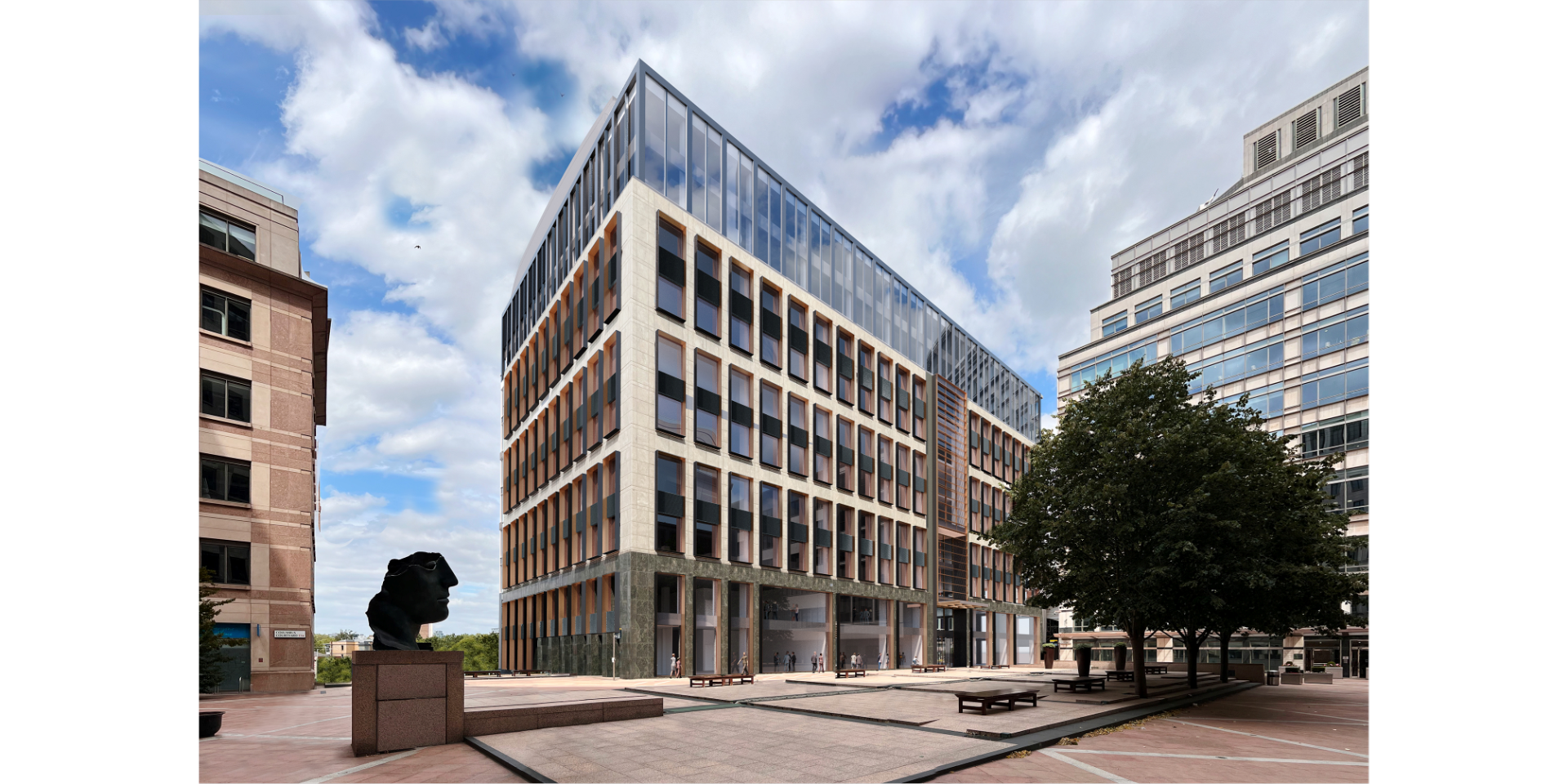Plans approved for 17 Columbus Courtyard



Plans approved for conversation of Canary Wharf office building into labs
Plans to transform an existing office building in Canary Wharf, 17 Columbus Courtyard, into a new state-of-the-art life science and technology hub, have been approved by Tower Hamlets Council for planning. Approved plans involve the complete retrofit, refurbishment and extension of a vacant office building, providing approximately 200,000 square feet of flexible new laboratory and office space to suit a range of occupiers.
Designed for LS Estates on behalf of Oaktree Capital Management, L.P., our proposals include the remodelling and refurbishment of lower floors to accommodate a new and accessible reception area and flexible meeting spaces. Double height bay windows and a café will activate and enhance the public realm at Columbus Courtyard.
Proposals align with the UKGBC Net Zero Carbon Framework, minimising both embodied and operational carbon, and aim to achieve BREEAM Excellent certification.
CEO Darren Comber said “This is a prime example of how we are taking a considered approach to repurposing existing buildings to meet the demands of today. As much as possible of the existing building fabric will be retained and reused, including floor slabs which will be adapted to meet laboratory requirements. An aesthetic and functional refresh will ensure the building’s relevance now, and for many years to come”.
Paul Bailey, Managing Director Life Sciences at LS Estates said, “We have begun to witness the emergence of Canary Wharf as a new life sciences cluster within London and 17 Columbus Courtyard will be one of the first lab-enabled buildings of scale to satisfy that increasing demand. With flexible floorspace and specification options available, we feel that occupiers will be able to focus on growing their businesses in a suitably collaborative environment”.
The project serves as an example of how existing building stock can be repurposed and adapted to meet the growing demand for life science facilities across the UK, while meeting occupant, wellbeing and sustainability objectives. Works have commenced onsite with a view to complete by the end of 2025.